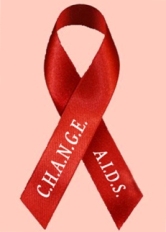|
 |
The most challenging problem facing our cure for AIDS lies in its premise: gene therapy. While gene therapy has great potential, it is still a science in its infancy. Gene therapy is a fragile process. The genes extracted from the primate and human DNA must survive throughout the entire process. The therapeutic DNA must remain fully stable. Furthermore, trying to integrate the gene into cells that are rapidly dividing may prove futile. It is extremely difficult to deliver a gene to millions of constantly-dividing cells. In addition, the process of successfully delivering the gene to the target cell is still an unrefined process.
|
 |
The viral vector we have chosen involves the Adeno-associated virus. Producing large stocks of Adeno-associated vectors is laborious and expensive. Additionally, Adeno-associated viruses have a very small DNA capacity, and inserting large genes into the virus may prove difficult, problematic, and time consuming. Hence, the main limiting factor when dealing with Adeno-associated viruses is time and cost effectiveness.
One of the main reasons that we chose Adeno-associated viruses as our vector was their lack of pathogenicity; that is, they will not produce an infectious disease. However, the mere presence of the virus may trigger a humoral immunity response in some humans.
|
 |
Zinc finger nucleases would be used to insert desirable genes into the viruses. These zinc finger nucleases, while highly successful in some regards, still have many shortcomings. In order to form a zinc-finger nuclease, zinc-finger domains are used. Each domain consists of DNA binding proteins centered around a zinc atom. These domains are then combined to form the nuclease. However, these domains lack the specificity to form a cohesive and stable zinc-finger nuclease. This lack of specificity can cause the nuclease to recognize secondary, unintended sites in the viral DNA. The recognition and cleavage of these sites may create more double-strand breaks than planned. These many breaks may irreparably damage the DNA. There is also a chance that the reparation mechanism of the virus will rejoin the DNA at incorrect places, leading to the possibility of mutations within the DNA, thereby rendering the new gene useless.
|
|
 |


